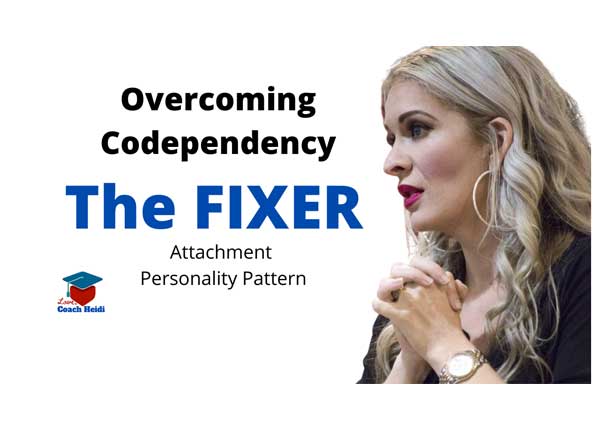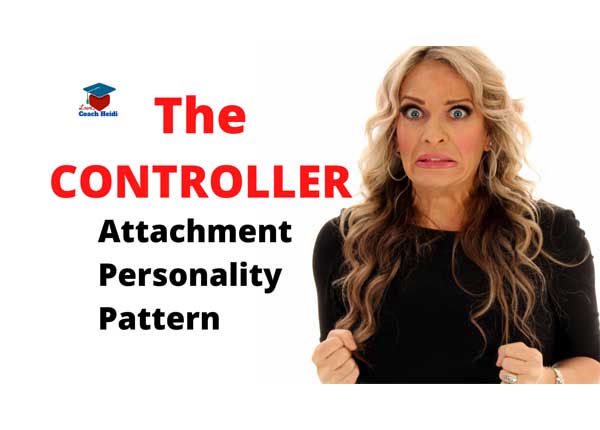Understanding Codependency: The Clinger Attachment Personality Pattern.
Such is the desperate reputation of Clingers: “One day, you will realize how much you love me and never leave me. And I’ll do anything to make that happen.”
In other movies, like Single White Female and Fatal Attraction, clingers are portrayed as dangerous, loose cannons, waiting to kill you should you have the audacity to reject them.
Such is the bad reputation of the Clinger: I’ll get you or I’ll get you back.
It’s all very black and white in those two depictions. But there is a gray area where people display an unhealthy attachment style that’s not so dramatic but perhaps equally as disturbing to the Clinger him/herself or the recipient.
Before we begin, what is an APP or Attachment Personality Pattern?
When you’re born into a family of dysfunction, one that is toxic, abusive, addicted, or alcoholic, you find a way to function in that dysfunction. You end up trying to find a way to survive, thrive, connect, or cope in that family of origin. And I call those are called attachment personality patterns. Essentially, they’re a form of codependency.
It’s important to remember, patterns are not pathology. Your personality is not fixed. You’re not the same person today that you were yesterday from the standpoint of personality. These patterns can be interrupted and replaced with healthier ways of relating.
Let’s get into the 5 core traits of a Clinger Attachment Personality Pattern:
Core trait #1. Clingers develop feelings/fall in love quickly and project a fantasy relationship onto others. Some may call this love at first sight. But a clinger will develop these feelings outside of romantic connections as well. They are quickly smitten with others and imagine soul mates. They will hold the fantasy of meeting the one and project those qualities onto others even when the qualities have yet to be demonstrated. They live more in the fantasy of the potential of the relationship than within the relationship itself. They believe in love at first sight. They make connections and see commonalities where none may be present. One says upon meeting, “I went to Ohio state.” and the Clinger says, “I have an aunt from Ohio!”
Core trait #2 Clinger personalities overshare. They share too much, too quickly.
In an attempt to foster connection and closeness, many Clingers will over share their feelings, thoughts, ideas, and most of all history. One may go to coffee with a Clinger and leave the 20 minute encounter with a full recount of the Clingers childhood trauma.
Clingers have a deep desire to be accepted and seen, and so in that vein, they share as much as they can about who they are to thwart rejection. The odd thing is that they actually create it in some cases through their fire hose approach to friendship or dating.
Core trait #3 Clinger Personalities are loyal to a fault.
Clingers believe the Devil they know is better than the Devil they don’t. Meaning, they would rather stay in a bad relationship or friendship than be alone. So, in order to avoid being alone or feeling rejected they will remain in harmful situations.
Core trait #4 Clinger Personalities do not have good sensory acuity and fail to read social cues. They do not recognize the unavailability of the people they are attracted to. They misread situations. For example, a Clinger may say, “This new guy I’m seeing is so honest. He is a real straight shooter! He told me he was seeing other people. And I love that about him.”
Or if one is giving obvious signs they aren’t interested, such as not returning texts or phone calls, the Clinger will make excuses for the behavior or they will wonder what’s wrong with them that they are making the other person do that behavior. They internalize others “bad” behavior and try to fix it.
Core trait #5 Clinger Personality seeks constant approval, affirmation, reassurance or praise.
Clingers will outright ask for constant reassurance.
They will say things like, “Do you love me?”
“Why do you love me?”
“Do you still want to be with me?”
“Why do you still want to be with me?”
“Where are we going in this relationship?”
“Do you think I’m attractive?”
“Do you think I’m fat, ugly, etc.”
“Does this outfit look good? What do you think I should wear?”
“Do you think I handled that okay?”
“Am I allowed to be upset?”
Etc.
This results from a low self esteem and the Clinger searches to fix their poor self view via the approval of others.
Of course this behavior backfires and results in others seeing the Clinger ass needy and undesirable.
So, that is the way out of this behavior?
The first step is always awareness. Take a look at these five core traits, grab a journal and ask yourself how these core traits have shown up in your life. How do you behave in your relationships in regard to these core traits? What effect do you think being a Clinger has had on your relationships?
Who would you be if you have nothing to prove? What if you were lovable just as you are? How would you behave in relationships without the fear of abandonment?
As you can see, the core fear of the clinger is that they will be abandoned and rejected.
Step two, after cultivating awareness is to seek and participate in your own healing journey from codependency.
Of course, I would love to have you enroll in LYFE School which is our step by step system to uncover and eradicate codependency patterns.
If you would like more information, please feel free to schedule a complimentary consultation at www.LoveCoachHeidi.com
Love,
Coach Heidi



Recent Comments